Introduction
Choosing the right toys for a 1-year-old can be a daunting task. With so many options available, it’s important to select toys that are not only fun but also safe, educational, and stimulating for your child’s development. This blog post will guide you through the top 10 best toys for 1-year-old children, providing detailed descriptions, benefits, and safety considerations.
10. Outdoor Play Equipment
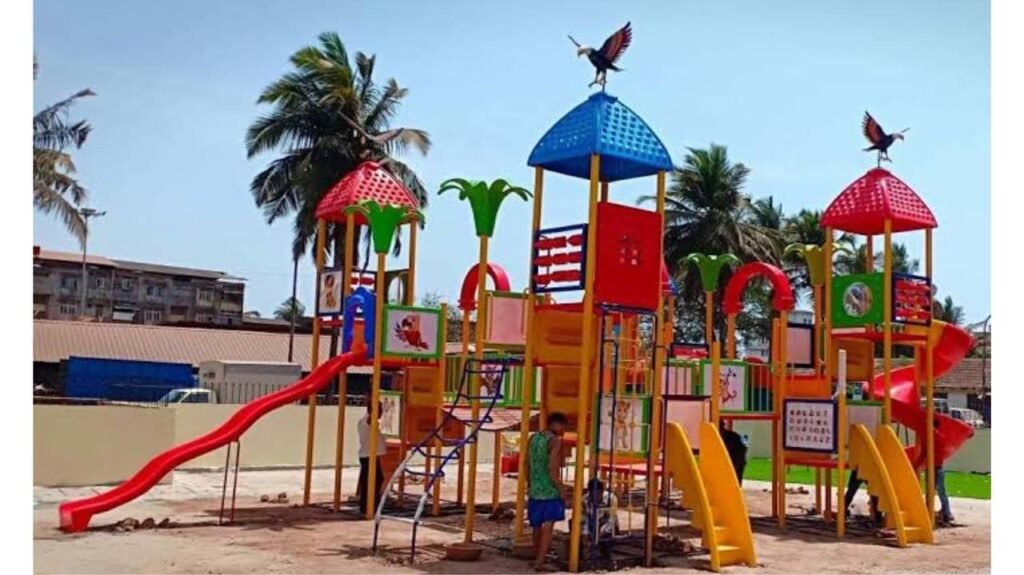
Outdoor play equipment provides opportunities for physical activity, exploration, and social interaction. It can help develop gross motor skills, balance, and coordination.
Benefits:
- Gross motor skills: Children develop their leg muscles and coordination.
- Balance and coordination: They learn to balance and climb.
- Social interaction: They can play with other children and develop social skills.
Safety considerations:
- Choose equipment that is appropriate for your child’s age and developmental level.
- Make sure the equipment is installed and maintained properly.
- Supervise your child at all times while they are playing on outdoor equipment.
Here are some details about outdoor play equipment suitable for 1-year-olds:
- Slides:
- Types: Look for small, low-to-the-ground slides with gentle slopes designed for toddlers. Some have built-in steps for easy climbing.
- Safety: Ensure the slide surface is smooth and free of cracks or sharp edges. Check for adequate safety railings.
- Swings:
- Types: Baby swings with harnesses are essential for this age. Consider swings with adjustable heights to grow with your child.
- Safety: Always use the safety harness properly. Check for sturdy chains and frames.
- See-saws:
- Types: Choose see-saws specifically designed for toddlers with shorter boards and wider bases for stability.
- Safety: Supervise closely to prevent falls or injuries.
- Playhouses:
- Types: Small, sturdy playhouses with easy entry and exit points are ideal. Some have windows, doors, and even porches.
- Safety: Ensure the playhouse is stable and free of sharp edges.
- Sandboxes:
- Types: Choose sandboxes with lids to keep the sand clean and dry when not in use.
- Safety: Use clean, play-safe sand. Supervise to prevent sand ingestion.
- Water Tables:
- Types: Water tables with various water features like spinners, fountains, and scoops provide hours of sensory fun.
- Safety: Ensure the water table is stable and the water depth is shallow.
Important Considerations for All Outdoor Play Equipment:
- Age Appropriateness: Always choose equipment specifically designed for 1-year-olds.
- Safety Certifications: Look for safety certifications from reputable organizations.
- Regular Inspections: Regularly inspect equipment for any signs of wear and tear, loose parts, or potential hazards.
- Supervision: Always supervise children while they are playing on outdoor equipment.
Remember: This is not an exhaustive list, and the best choices will depend on your child’s individual interests and your specific needs and preferences.
9. Dolls and Stuffed Animals
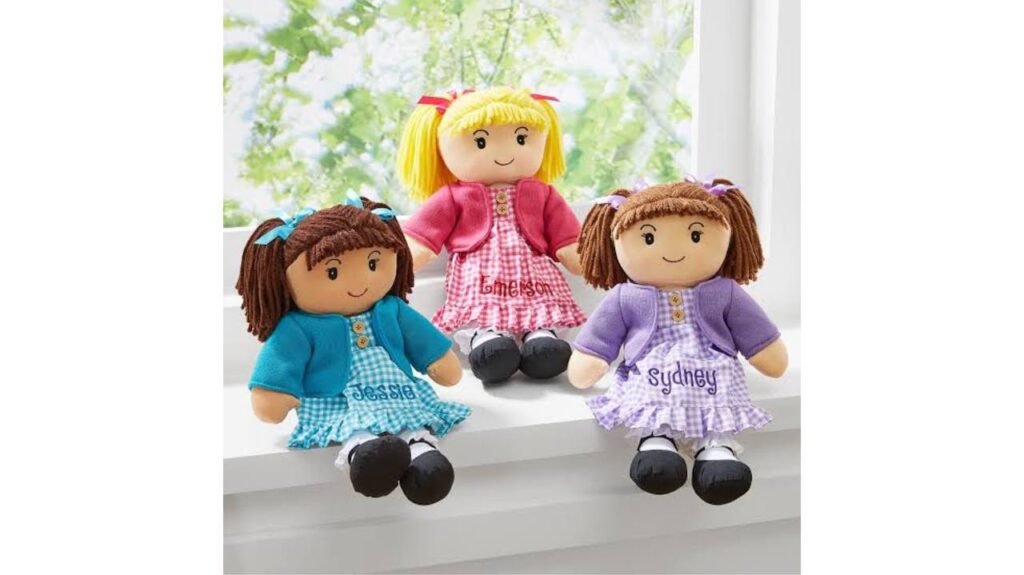
Dolls and stuffed animals provide comfort and companionship for toddlers. They can also help develop social-emotional skills and imaginative play.
Benefits:
- Social-emotional development: Children learn to nurture and care for others.
- Imaginative play: They can create stories and scenarios with their dolls and stuffed animals.
- Comfort: They can provide a sense of security and comfort for toddlers.
Safety considerations:
- Choose dolls and stuffed animals that are made from soft, non-toxic materials.
- Avoid toys with small parts that could be a choking hazard.
Dolls and Stuffed Animals for 1-Year-Olds
Dolls and stuffed animals offer more than just cuddly companionship for 1-year-olds. They play a vital role in their social-emotional, cognitive, and imaginative development.
Social-Emotional Development:
- Nurturing and Care: Toddlers begin to understand the concept of caring for others. They may imitate their parents by feeding, rocking, or changing their dolls’ diapers. This helps them develop empathy and compassion.
- Emotional Expression: Dolls and stuffed animals can become comforting companions, offering a sense of security and reducing anxiety, especially during times of stress or separation.
- Social Interaction: Playing with dolls can facilitate social interaction with other children. Toddlers may engage in imaginative play, sharing their toys and creating stories together.
Cognitive Development:
- Language Development: Children often talk to their dolls, expanding their vocabulary and practicing communication skills.
- Imaginative Play: Dolls and stuffed animals become characters in their own stories. Toddlers use their imaginations to create scenarios, developing their creativity and problem-solving abilities.
- Symbolic Thinking: Playing with dolls helps children understand the concept of representation, where a doll stands in for a real person.
Choosing the Right Dolls and Stuffed Animals:
- Safety First: Always prioritize safety. Look for toys made from soft, non-toxic materials with no small parts that could pose a choking hazard.
- Age-Appropriateness: Choose dolls and stuffed animals that are appropriate for a 1-year-old’s developmental stage. Simple, soft toys with washable surfaces are ideal.
- Variety: Offer a variety of options, including different animals, characters, and sizes. This encourages imaginative play and exploration.
Examples:
- Soft, cuddly animals: Classic teddy bears, plush dogs, or friendly farm animals.
- Simple dolls: Cloth dolls with easy-to-grasp limbs and washable surfaces.
- Interactive dolls: Dolls with simple sounds or movements can add an extra layer of engagement.
Remember:
- Engage with your child: Play with your child and their dolls, encouraging their imagination and storytelling.
- Provide a safe and nurturing environment: Create a space where your child feels comfortable playing with their toys.
- Most importantly, let your child’s imagination run wild!
By providing a variety of engaging dolls and stuffed animals, you can support your child’s development in many important areas.
8. Interactive Books
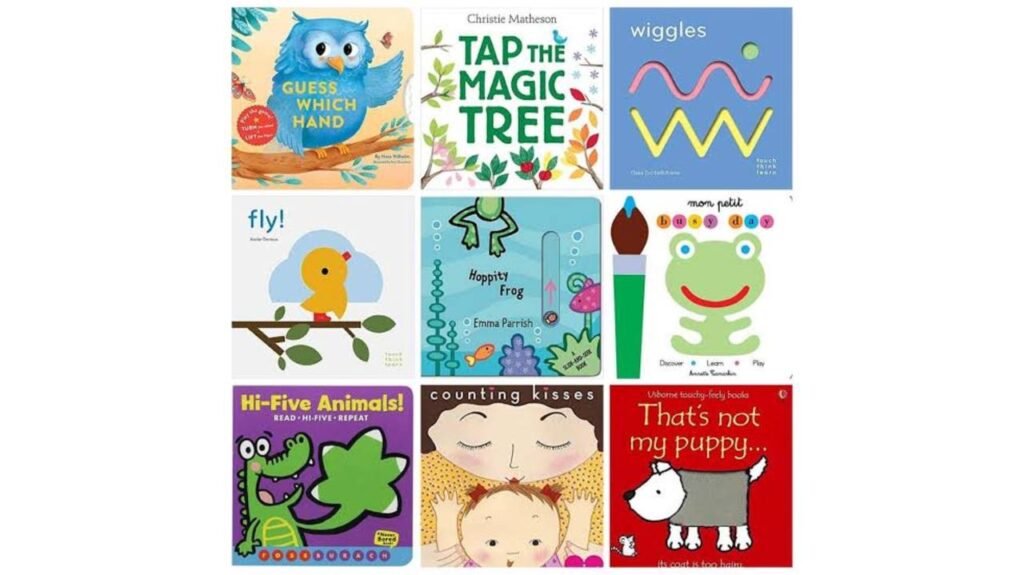
Interactive books are a great way to introduce toddlers to reading and language. They often have colorful pictures, sounds, and textures that engage a child’s senses.
interactive books for 1yearolds
Benefits:
- Language development: Children learn new words and concepts.
- Cognitive development: They develop an understanding of stories and narratives.
- Social-emotional development: They can bond with their parents or caregivers through shared reading experiences.
Safety considerations:
- Choose books that are made from durable and safe materials.
- Avoid books with small parts that could be a choking hazard.
Interactive books for 1-year-olds are designed to engage a child’s senses and encourage exploration. Here are some key details:
- Features:
- Touch and Feel Elements: These books often incorporate various textures like fur, feathers, and rubbery materials, allowing babies to explore different sensations.
- Sound Effects: Many interactive books include buttons or pull tabs that trigger animal sounds, music, or simple phrases.
- Movable Parts: Some books feature flaps to lift, wheels to spin, or sliders to move, encouraging fine motor skills and curiosity.
- Bright Colors and Bold Illustrations: Eye-catching visuals are crucial for capturing a baby’s attention and stimulating their visual development.
- Simple Text: Interactive books often have short, repetitive phrases that are easy for babies to understand and remember.
- Benefits:
- Sensory Development: Engage multiple senses (touch, sight, hearing)
- Fine Motor Skills: Encourage hand-eye coordination and dexterity through manipulating parts.
- Language Development: Introduce new words and sounds.
- Cognitive Development: Foster curiosity, cause-and-effect understanding, and object permanence.
- Bonding: Provide a shared experience for parents and babies during reading time.
Examples:
- “Pat the Bunny” by Dorothy Kunhardt: A classic touch-and-feel book with simple text and engaging textures.
- “That’s Not My…” series: These books feature textured elements for babies to explore, such as fuzzy puppies, scratchy cats, and bumpy dinosaurs.
- “Dear Zoo” by Rod Campbell: A lift-the-flap book where children choose the animal they want to receive, with each page featuring a different animal sound.
- “The Very Hungry Caterpillar” by Eric Carle: This iconic book features colorful illustrations and interactive elements like holes to peek through.
Safety Considerations:
- Durability: Choose books with sturdy construction that can withstand baby’s enthusiastic handling.
- Non-Toxic Materials: Ensure all materials used in the book are safe for babies to touch and explore.
- Small Parts: Avoid books with small detachable parts that could pose a choking hazard.
By selecting interactive books that are engaging and developmentally appropriate, you can provide a valuable learning experience for your 1-year-old while fostering a love of reading.
7. Sensory Toys

Sensory toys engage a child’s senses of sight, touch, hearing, smell, and taste. They can help develop fine motor skills, cognitive abilities, and sensory processing.
Benefits:
- Sensory exploration: Children can explore different textures, sounds, and smells.
- Fine motor skills: They develop the ability to grasp and manipulate the toys.
- Cognitive development: They learn about cause and effect.
Safety considerations:
- Choose toys that are made from non-toxic materials and are free of small parts.
- Make sure the toys are appropriate for your child’s age and developmental level.
Sensory Toys for 1-Year-Olds
Sensory toys are designed to engage a child’s senses of sight, touch, hearing, smell, and even taste. They are incredibly important for a 1-year-old’s development, as they help them:
- Understand the world around them: By exploring different textures, sounds, and sights, babies begin to make connections and learn about cause and effect.
- Develop fine motor skills: Many sensory toys require grasping, squeezing, and manipulating, which strengthens hand-eye coordination and finger dexterity.
- Calm and soothe: Certain sensory experiences, like soft textures and calming sounds, can help regulate a child’s emotions and provide a sense of comfort.
- Boost cognitive development: Sensory play encourages exploration, curiosity, and problem-solving.
Here are a few examples of sensory toys suitable for 1-year-olds:
- **Textured balls: These come in a variety of textures, from soft and fuzzy to bumpy and spiky. They encourage exploration through touch and can help develop hand-eye coordination.
- **Sensory bottles: Filled with colorful liquids, glitter, beads, or other interesting objects, these bottles captivate a child’s attention and provide visual and auditory stimulation.
- **Stacking cups: These classic toys offer endless possibilities for sensory play. Babies can stack them, nest them, fill them with water or sand, and explore the different sounds they make.
- **Soft toys with crinkly sounds: These toys combine soft textures with engaging sounds, providing both tactile and auditory stimulation.
- **Musical instruments: Shakers, drums, and simple instruments like xylophones introduce babies to music and rhythm, engaging their sense of hearing and encouraging movement.
Remember: When choosing sensory toys, always prioritize safety. Look for toys that are made from non-toxic materials, are free of small parts that could be a choking hazard, and are appropriate for your child’s age and developmental level.
By incorporating sensory play into your child’s daily routine, you can provide them with valuable experiences that will support their overall development.
6. Building Blocks
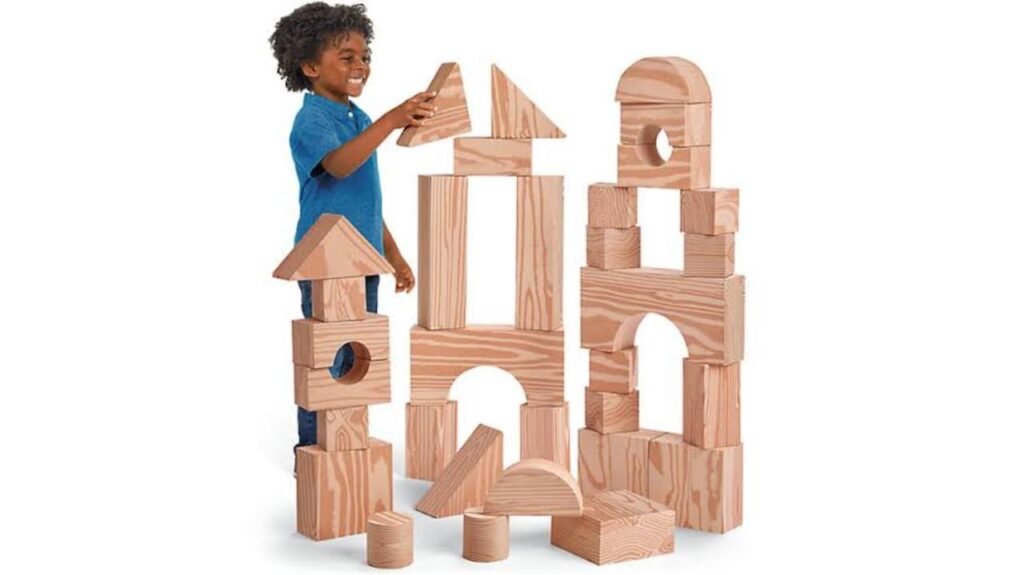
Building blocks are a classic toy that can be used for a variety of activities. They help develop fine motor skills, creativity, and problem-solving abilities.
Benefits:
- Fine motor skills: Children develop the ability to grasp and manipulate the blocks.
- Creativity: They can use the blocks to build forts, towers, and other structures.
- Problem-solving: They learn to solve the puzzle of fitting the blocks together.
Safety considerations:
- Choose blocks that are made from non-toxic materials and are free of small parts.
- Make sure the blocks are large enough to prevent choking hazards.
Building blocks are a classic toy that can be used for a variety of activities. They help develop fine motor skills, creativity, and problem-solving abilities.
Benefits:
- Fine motor skills: Children develop the ability to grasp and manipulate the blocks.
- Creativity: They can use the blocks to build forts, towers, and other structures.
- Problem-solving: They learn to solve the puzzle of fitting the blocks together.
Safety considerations:
- Choose blocks that are made from non-toxic materials and are free of small parts.
- Make sure the blocks are large enough to prevent choking hazards.
Types of building blocks:
- Wooden blocks: These blocks are durable and come in a variety of shapes and sizes. They are often painted with non-toxic paints.
- Plastic blocks: These blocks are lightweight and easy to clean. They come in a variety of colors and shapes.
- Foam blocks: These blocks are soft and safe for babies to play with. They are also easy to clean.
Choosing building blocks:
When choosing building blocks for a 1-year-old, it is important to consider the following factors:
- Age: Choose blocks that are appropriate for your child’s age and developmental level.
- Size: Choose blocks that are large enough to prevent choking hazards.
- Material: Choose blocks that are made from non-toxic materials.
- Safety: Make sure the blocks are free of sharp edges and small parts.
Activities with building blocks:
There are many different activities that you can do with building blocks. Here are a few ideas:
- Stacking: Encourage your child to stack the blocks on top of each other.
- Building: Help your child build towers, forts, and other structures.
- Sorting: Help your child sort the blocks by color or size.
- Matching: Help your child match the blocks to the corresponding shapes.
Building blocks are a versatile toy that can be used for a variety of activities. They are a great way to help your child develop their fine motor skills, creativity, and problem-solving abilities.
5. Musical Instruments
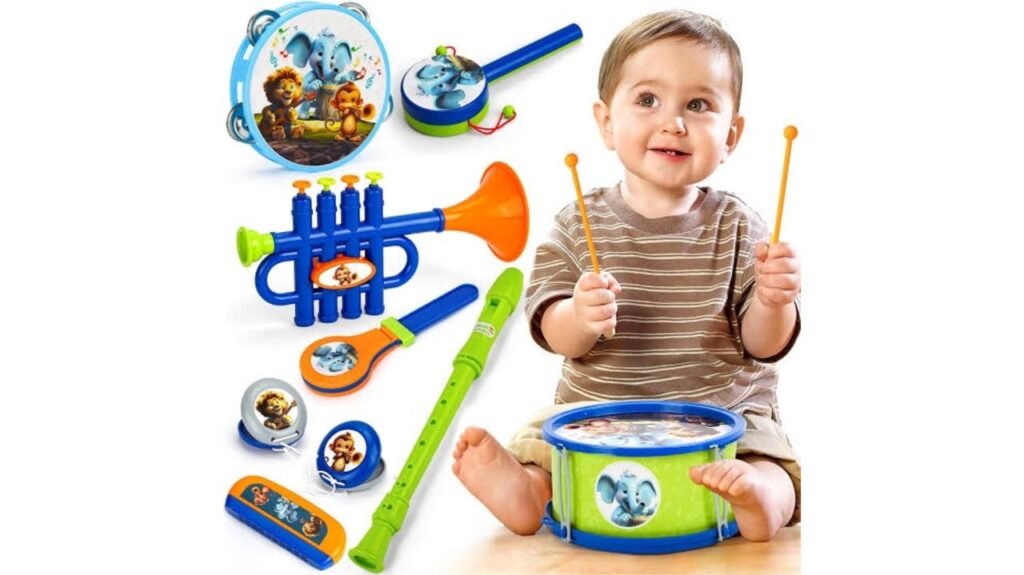
Musical instruments are a fun way to introduce toddlers to music and rhythm. They can help develop language skills, creativity, and coordination.
Benefits:
- Language development: Toddlers learn to associate sounds with words.
- Creativity: They can experiment with different sounds and rhythms.
- Coordination: They develop hand-eye coordination and fine motor skills.
Safety considerations:
- Choose instruments that are made from durable and safe materials.
- Avoid instruments with sharp edges or small parts.
Musical instruments are devices used to create musical sounds. They come in various forms and utilize different methods to produce sound, such as vibrating strings, blowing air, or striking objects.
Some common types include:
- String instruments: Guitars, violins, pianos
- Wind instruments: Flutes, trumpets, saxophones
- Percussion instruments: Drums, cymbals, tambourines
- Keyboard instruments: Pianos, organs, synthesizers
Musical instruments play a crucial role in various cultures and societies, serving purposes of entertainment, expression, and cultural heritage.
4. Shape Sorters
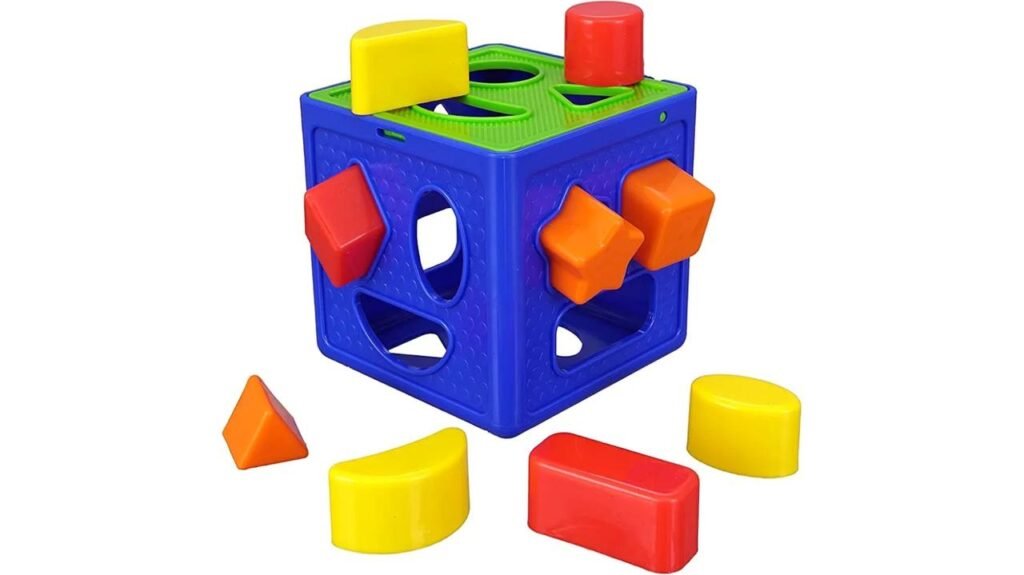
Shape sorters help toddlers learn about shapes and colors. They also help develop fine motor skills and hand-eye coordination.
Benefits:
- Shape recognition: Children learn to identify different shapes.
- Color recognition: They learn to match colors.
- Fine motor skills: They develop the ability to grasp and manipulate the shapes.
Safety considerations:
- Choose toys with smooth edges and non-toxic paint.
- Make sure the shapes are large enough to prevent choking hazards.
Shape sorters are educational toys that help toddlers learn about shapes and colors. They typically consist of a container with various shaped holes and a set of corresponding blocks or shapes.
Benefits:
- Shape Recognition: Children learn to identify different shapes (circle, square, triangle, etc.).
- Color Recognition: Many shape sorters feature brightly colored shapes, helping children learn to distinguish colors.
- Fine Motor Skills: Matching shapes and putting them into the correct holes develops hand-eye coordination and finger dexterity.
- Problem-Solving: Figuring out which shape fits into which hole encourages problem-solving skills.
Key Features:
- Sturdy Construction: Often made from wood or durable plastic.
- Smooth Edges: Ensure safety for young children.
- Bright Colors: Attract a child’s attention.
- Easy to Grasp Shapes: Designed for small hands.
Shape sorters are a classic and engaging toy that provides valuable learning opportunities for young children.
3. Soft Blocks
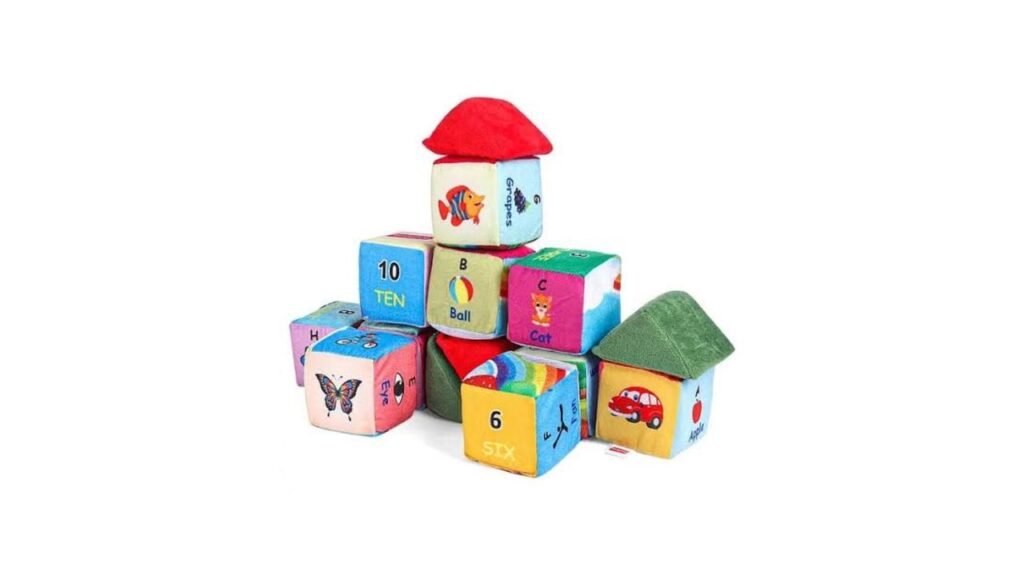
Soft blocks are a versatile toy that can be used for building, stacking, and sitting. They are soft and safe for babies to play with and explore.
Benefits:
- Sensory exploration: Babies can explore the different textures and colors of the blocks.
- Fine motor skills: They can grasp and manipulate the blocks.
- Creativity: They can use the blocks to build forts, towers, and other structures.
Safety considerations:
- Choose blocks that are made from non-toxic materials and are free of small parts.
- Make sure the blocks are large enough to prevent choking hazards.
Soft blocks are a safe and versatile toy for 1-year-olds. They’re made from soft, squishy materials, perfect for little hands to explore.
Benefits:
- Sensory Play: Babies love the different textures and colors.
- Fine Motor Skills: Grasping and manipulating the blocks helps develop hand-eye coordination.
- Creativity: They can build towers, forts, and other imaginative structures.
Safety:
- Always choose blocks made from non-toxic materials.
- Make sure they’re large enough to prevent choking hazards.
2. Push and Pull Toys
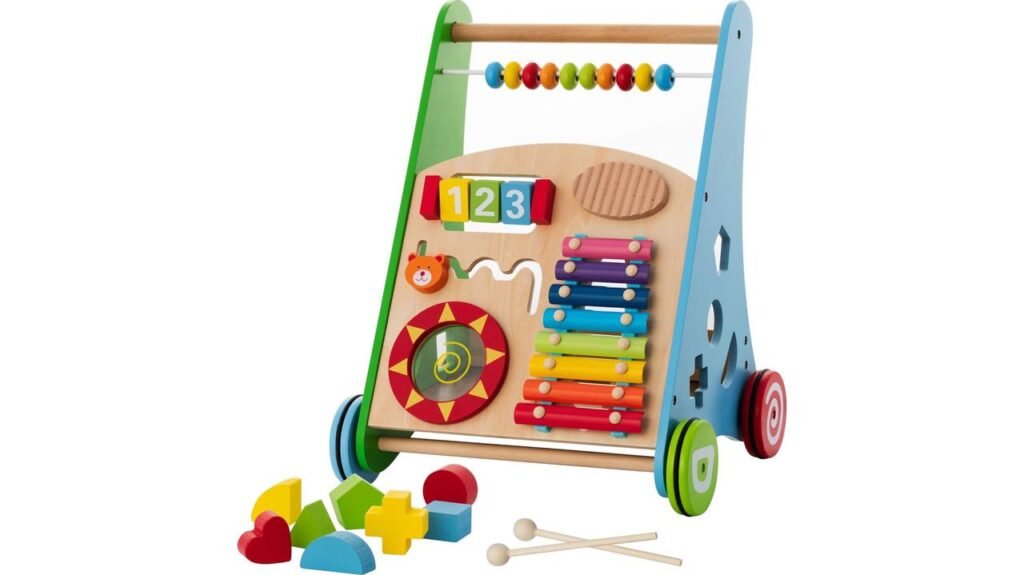
Push and pull toys encourage gross motor development and help toddlers explore their surroundings. Look for toys with sturdy wheels and handles that are easy to grip.
Benefits:
- Gross motor skills: Pushing and pulling the toy helps develop leg muscles and coordination.
- Balance and coordination: Toddlers learn to balance and steer the toy.
- Exploration: They can explore their environment while playing with the toy.
Safety considerations:
- Choose toys with stable bases to prevent tipping.
- Make sure the wheels are smooth and quiet to avoid scaring the child.
Push and pull toys are designed to be pushed or pulled by a child, encouraging them to move and explore.
Benefits:
- Gross motor skills: Strengthen leg muscles and improve coordination.
- Balance and coordination: Help toddlers learn to balance and steer.
- Exploration: Encourage children to explore their environment.
Examples:
- Wagons: Classic choice, can be used to carry toys or themselves.
- Animal-shaped toys: Often have wheels and easy-to-grip handles.
- Walking cars: Encourage walking and pushing.
Safety:
- Sturdy base: Prevents tipping.
- Smooth wheels: Reduce noise and prevent injury.
In essence, push and pull toys are a fun and engaging way for 1-year-olds to develop essential motor skills while having a blast.
1. Stacking Toys
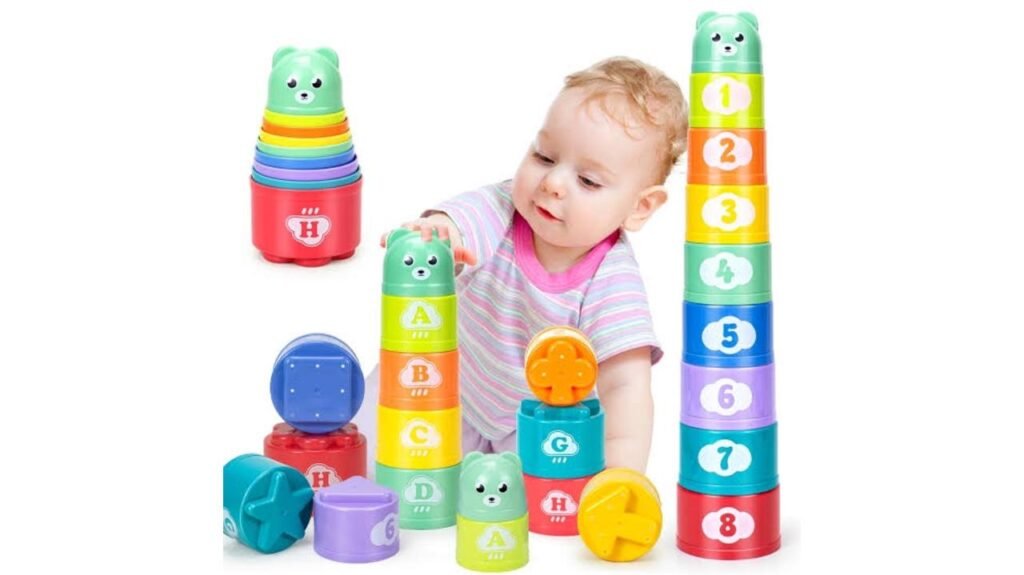
Stacking toys are a classic choice for 1-year-olds. They help develop fine motor skills, hand-eye coordination, and problem-solving abilities. Look for toys with brightly colored rings or blocks of varying sizes that can be stacked and unstacked.
Benefits:
- Fine motor skills: Stacking and unstacking the rings or blocks helps develop finger dexterity and hand-eye coordination.
- Problem-solving: Children learn to solve the puzzle of fitting the pieces together.
- Cognitive development: They learn about size, shape, and order.
Safety considerations:
- Choose toys with smooth edges and non-toxic paint.
- Make sure the pieces are large enough to prevent choking hazards.
Stacking toys typically involve sets of rings, blocks, or cups of varying sizes that can be stacked on top of each other.
Key benefits:
- Fine motor skills: Improves hand-eye coordination, finger dexterity, and grasping.
- Problem-solving: Teaches about size, order, and spatial relationships.
- Cognitive development: Enhances understanding of concepts like bigger/smaller, on top/below.
Safety: Ensure pieces are large enough to prevent choking hazards and made from non-toxic materials.
Conclusion
Choosing the right toys for a 1-year-old can make a big difference in their development. By selecting toys that are safe, educational, and stimulating, you can help your child reach their full potential. Remember to always supervise your child while they are playing with toys and to choose toys that are appropriate for their age and developmental level.
FAQs
Q1. What are the best toys to stimulate a 1-year-old child’s development?
Ans. The best toys for 1-year-olds are those that encourage sensory development, motor skills, and early cognitive abilities. Toys like soft blocks, stacking rings, shape sorters, and textured balls are great choices. These toys help build hand-eye coordination, introduce colors and shapes, and support fine and gross motor skills. Interactive toys like musical instruments or baby-safe books with textures also engage a child’s senses and foster curiosity.
Q2. How do I choose safe toys for my 1-year-old?
Ans. When selecting toys for a 1-year-old, safety is the top priority. Choose toys made from non-toxic materials, such as BPA-free plastic, soft fabrics, or wood that has been treated with non-toxic paint. Avoid small parts or pieces that could be a choking hazard. Additionally, make sure the toy is durable and free of sharp edges or any small detachable components that could be swallowed. Always check the age recommendations on toy packaging to ensure they are suitable for 1-year-olds.
Q3. How do toys for 1-year-old children aid in their development?
Ans. Toys for 1-year-old children support various aspects of their development. For example, stacking toys and shape sorters improve fine motor skills and hand-eye coordination. Musical toys foster auditory development and rhythm recognition, while interactive toys that respond to actions help with cause-and-effect understanding. These toys also encourage social and emotional growth when played with caregivers or other children, helping to build bonds and communication skills. The right toys will offer a balanced mix of fun and developmental benefits.

